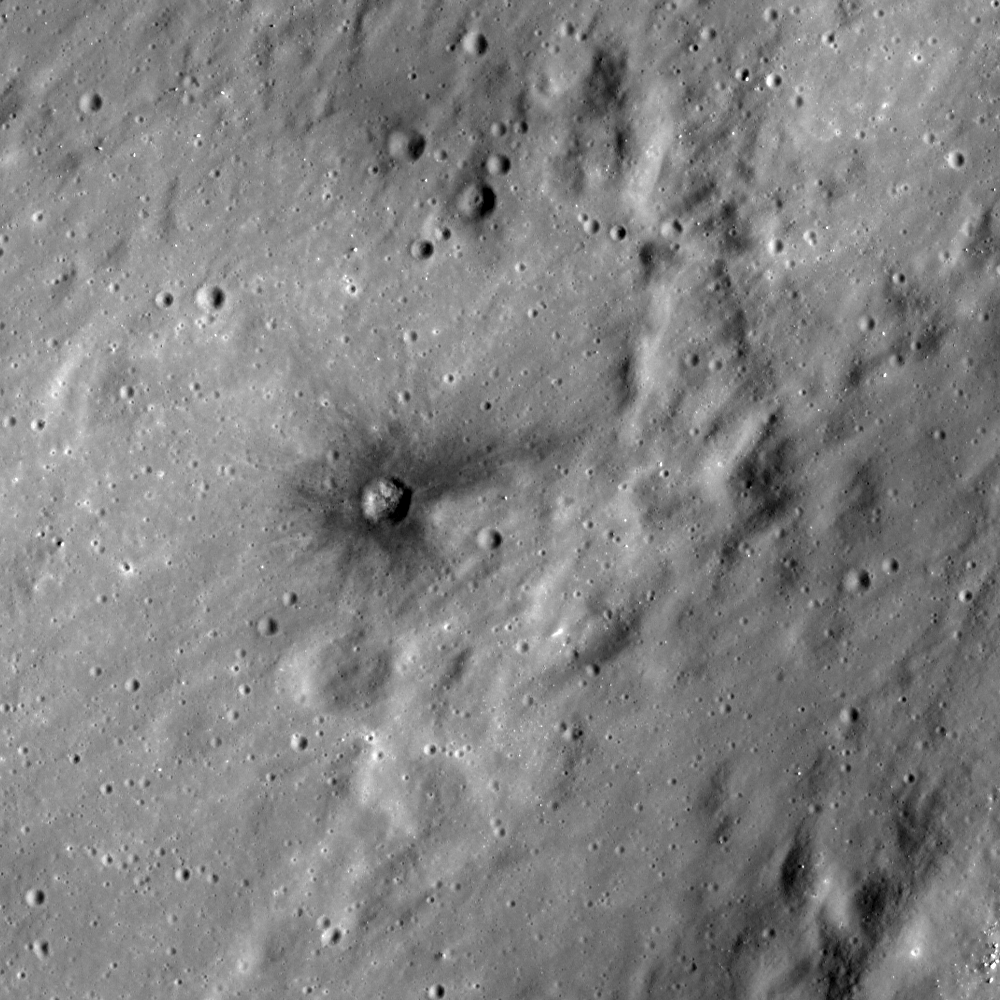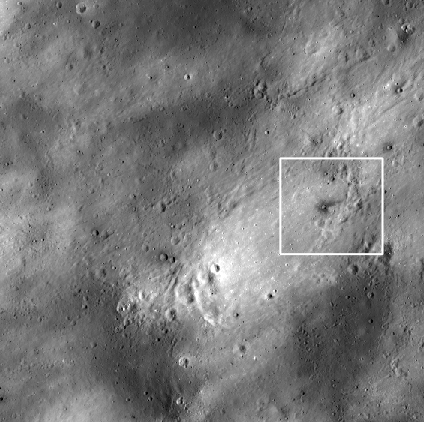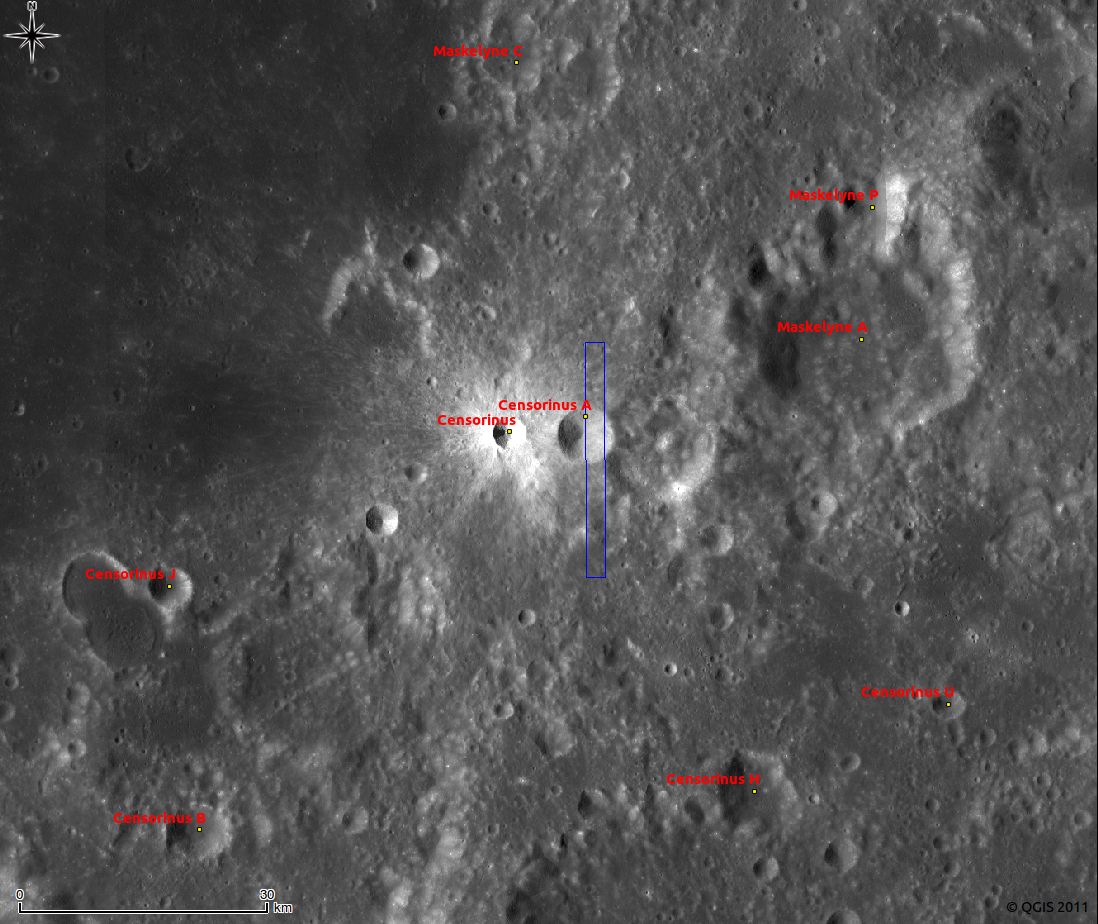
Fresh impact crater ejecta is generally brighter than the surroundings because it is "immature". As material rests on the surface of the Moon it is slowly altered by solar wind sputtering and micrometeorite bombardment that results in a general darkening and shift in color. This change in reflectance properties is known as space weathering, or maturation. Impacts excavate materials from beneath the mature surface resulting high reflectance rays. If you are very patient, and waited around for 500 million years you could observe rays slowing fade as they mature. But the small crater (25 meter diameter) in today's Featured Image displays dark ejecta deposits, so what is happening here?
This tiny crater is located near near Mare Tranquillitatis, 200 m north of Censorinus A crater. The surrounding area is covered by ejecta coming from Censorinus, which is about 12 km distant (the surface streaks point back to the crater). The dark and bright areas are intermixed (see middle image), and the tiny dark ejecta crater is located on the brighter portion of the ejecta. The brighter ray materials are likely on the top of darker materials, which are perhaps simply mature soils or maybe impact melt from the earlier Censorinus impact event. So when the small crater was formed, it excavated dark material from beneath a bright ray.
Explore dark ejecta deposits and surrounding areas in full NAC frame!
Related posts:
Dark-haloed crater in Mare Humorum, Action Shot, Splendors of Mare Smythii, Rima Bode: Constellation region of interest, Dark Craters on a Bright Ejecta Blanket
Published by Hiroyuki Sato on 28 July 2011

